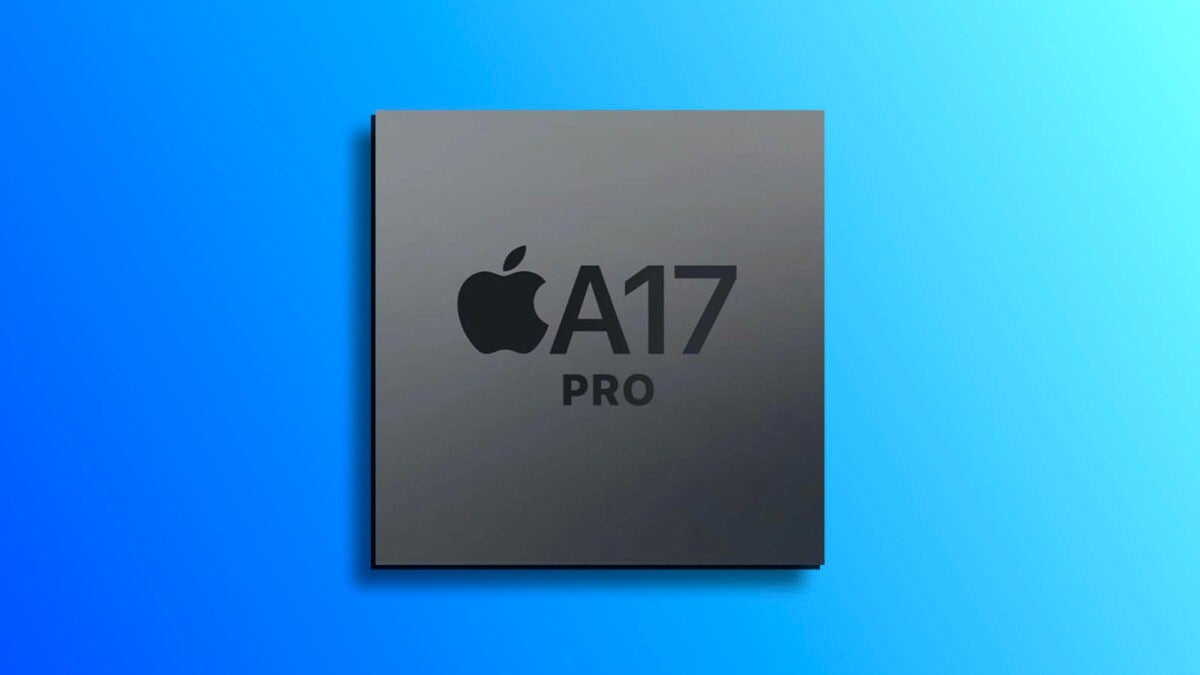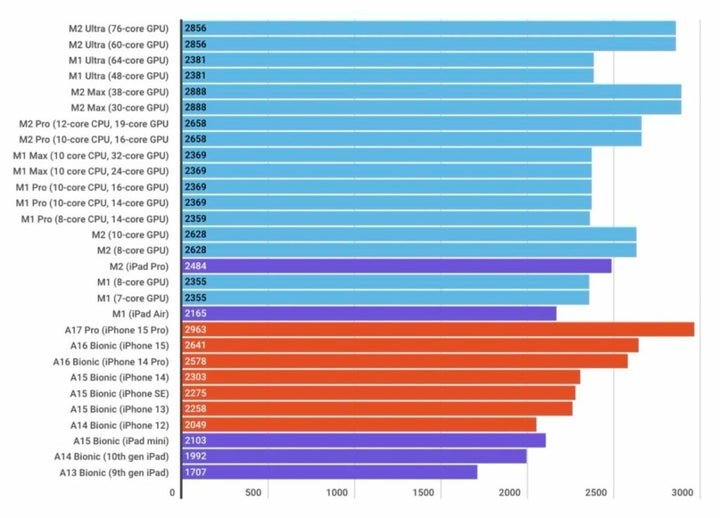News
This is how the A17 Pro of the iPhone 15 compares to the rest of Apple’s chips
A chip that speaks to us about the future.

- October 21, 2023
- Updated: August 26, 2024 at 6:54 AM
The technological evolution in the world of processors and chips never stops, and Apple is one of the companies leading this race. With the recent introduction of the A17 Pro chip in the iPhone 15, the company has once again set new standards in terms of performance and efficiency. But how does this new powerhouse compare to other Apple chips?
A winning chip, no matter how you look at it
The iPhone 15 Pro and iPhone 15 Pro Max are the flagship devices housing the powerful A17 Pro chip. This processor features 2 high-performance cores at 3.78GHz, 4 efficiency cores at 2.11GHz, and 6 graphics cores. With a 16-core neural engine and 8GB of memory, it’s evident that Apple aims to redefine the mobile experience with exceptional performance, backed by 19 billion transistors and an 8W thermal design.
If we compare the A17 Pro with its predecessors, the leap is significant. As reported by MacWorld, the A16 Bionic, found in the iPhone 15 and iPhone 14 Pro, has slightly inferior features, including 2 performance cores at 3.46GHz and 5 graphics cores. Although still an impressive chip, it falls a step below the A17 Pro. On the other hand, the iPhone 14 and 13 share the A15 Bionic, but the iPhone 14 has an additional graphics core, giving it an edge in terms of graphics.
Stepping outside of iPhones and looking at iPads, the M2 and M1 processors dominate the market. The M2, with 4 high-performance cores at 3.49GHz and 10 graphics cores, powers the 12.9″ and 11″ iPad Pro models. Considering the values, the iPad Pro lineup, equipped with the M2 chip, sees iPhone chip versions, in this case, the A17 Pro, steadily approaching its power and specifications.
In the Mac universe, the landscape is even broader. With chips like the M2 Ultra, offering up to 76 graphics cores and featured in machines like the Mac Studio and Mac Pro, Apple showcases the diversity and power in its desktop and laptop devices. While these chips operate in a completely different league than those found in the iPhone, it’s essential to highlight that the A17 Pro is very close in Geekbench multicore results to the original M1 chip.

Certainly. Additionally, the A17 Pro outperforms all other Apple chips, including the M2 Ultra found in the most powerful computers, in Geekbench single-core scores.
The iPhone 15’s A17 Pro establishes itself as a giant in the mobile world, surpassing its predecessors by a wide margin and offering an unparalleled user experience. Although in the Apple universe there are chips with even more powerful specifications designed for more demanding tasks, the A17 Pro highlights what is coming soon to Apple’s silicon.
Architect | Founder of hanaringo.com | Apple Technologies Trainer | Writer at Softonic and iDoo_tech, formerly at Applesfera
Latest from David Bernal Raspall
You may also like

Don’t Miss Out: Adobe’s Biggest Black Friday Deals – Save Big on Creative Cloud
Read more

Find out if you have been blocked on WhatsApp or Telegram
Read more

An iPhone that isn't from Apple? This is its curious story
Read more

Apple La Vaguada: this is how its inauguration went
Read more

The game that has been accused of plagiarizing Horizon Zero Dawn… But it is more similar to Palworld
Read more

Capture the Magic: Create Your Perfect Family Album with Adobe InDesign This Holiday Season!
Read more